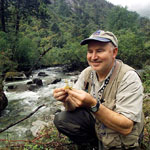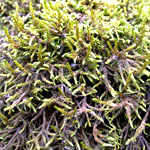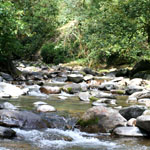
|
||||||||||||||||
|
||||||||||||||||
|
||||||||||||||||
Bryology in the Gaoligong Mountains Discoveries
Who is involved?
Where we collectedMap the bryophytes surveyed in each county by clicking on the links below: 2002: Nujiang Prefecture, Gongshan county |
Bryologist, Jim Shevock collecting bryophtes along the Pula River in Gongshan county. |
|
||||||||||||||
The moss Hydrocryphaea wardii, reported from Gongshan County, is new for China. It occurs along the Nu Jiang within 1-2 meters of the high water mark. Map it! |
|
|||||||||||||||
|
|
|
||||||||||||||







